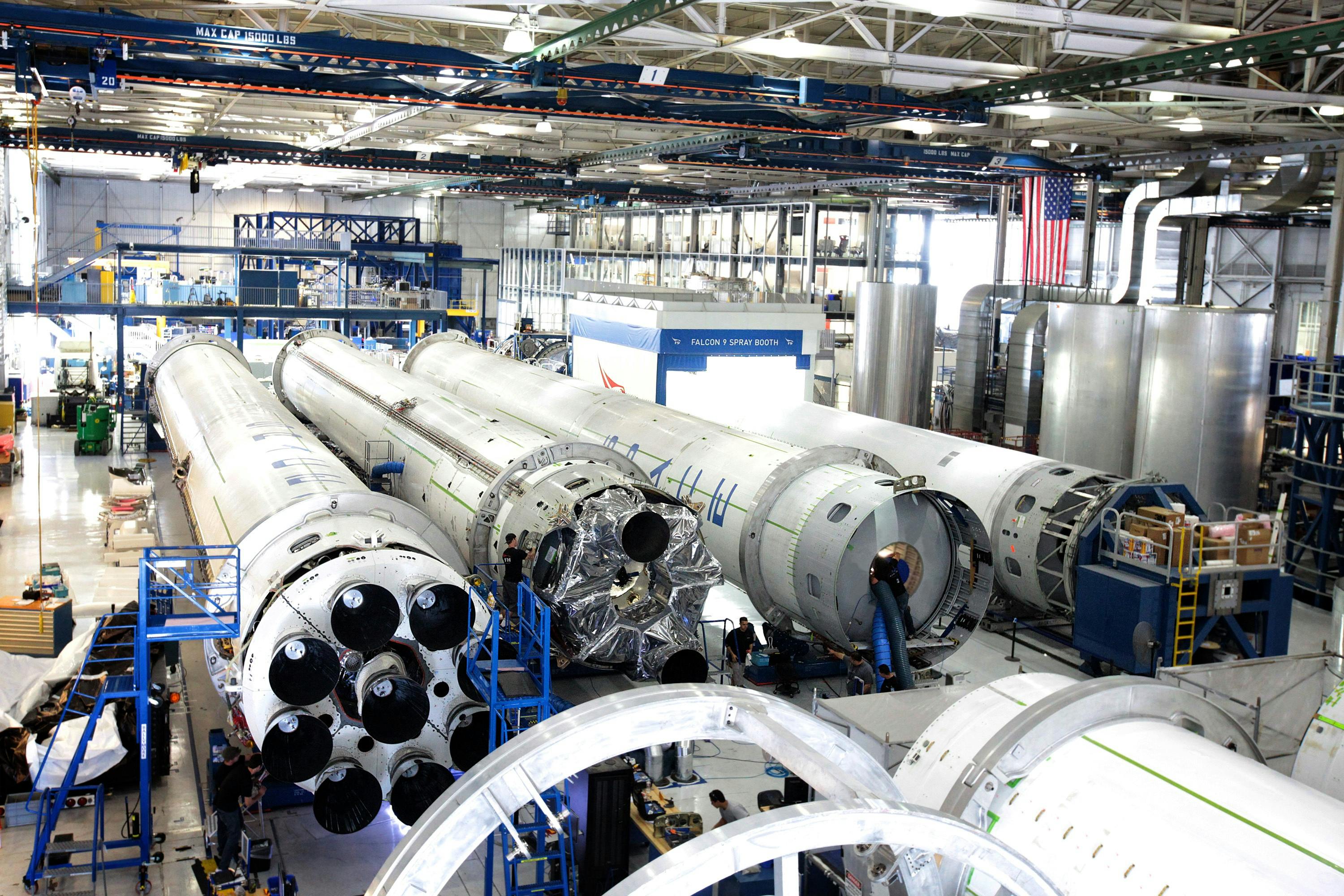· space brief · 5 min read
Space Brief 1 Dec 2024
Today's highlights: China's Long March 12 boosts lunar ambitions, SpaceX supports NRO's satellite infrastructure, Firefly prepares lunar mission, and NASA partners with SpaceX for Titan exploration.

📄Top Stories
China significantly advanced its lunar ambitions with the successful launch of its first Long March 12 rocket from a new commercial spaceport. In other news, SpaceX has completed its fifth mission enhancing the National Reconnaissance Office’s satellite network, while Lockheed Martin revealed a new solar power array designed for NASA’s Artemis lunar program. Firefly Aerospace is set to launch its Blue Ghost Mission 1 to the Moon, as NASA awards SpaceX a contract for the Dragonfly mission to explore Titan.
📰Detailed Coverage
China’s Long March 12 Rocket Launches From New Spaceport
China’s space program marked a milestone with the successful launch of the Long March 12 rocket from the Wenchang Commercial Space Launch Site. This event supports China’s crewed lunar exploration plans and highlights the country’s burgeoning commercial space capabilities. The new spaceport is expected to significantly boost China’s launch cadence and expand its international commercial launch services.
The Long March 12’s launch from this new facility signifies China’s commitment to international space competition and emphasizes its strategic investments in expanding launch capabilities. This development could influence global satellite launch markets, given China’s growing capacity to deliver various payloads to orbit and explore deeper space missions.
Read the full story: SpaceNews
SpaceX Launches Fifth Mission for NRO’s Satellite Network
SpaceX has launched another wave of satellites for the National Reconnaissance Office (NRO), contributing to what is described as the U.S. government’s largest satellite constellation to date. This mission underscores the increasing importance of satellite constellations in national security and intelligence gathering, expanding the NRO’s global reconnaissance capabilities.
The deployment of these satellites enhances the NRO’s ability to provide near real-time data to military and intelligence operations. It also represents a significant collaboration between public and private space sectors to develop robust satellite architectures aimed at various global surveillance and communication needs.
Read the full story: SpaceNews
Firefly Aerospace Prepares for Lunar Mission
Firefly Aerospace is preparing to launch its Blue Ghost lunar lander, marking the company’s first mission supporting NASA’s Commercial Lunar Payload Services initiative. The spacecraft has successfully completed environmental testing and is to be shipped to Cape Canaveral for a scheduled mid-January launch aboard a SpaceX Falcon 9 rocket.
The mission is a key component of NASA’s efforts to enable scientific and exploration payloads to the Moon, creating pathways for sustained lunar surface operations. As more missions like Blue Ghost prepare for launch, satellite tracking services will be instrumental in monitoring and analyzing these space endeavors.
Read the full story: Space Explored
NASA Awards Contract for Dragonfly Mission to Titan
NASA has selected SpaceX to provide launch services for the Dragonfly mission, an innovative rotorcraft lander destined for Saturn’s moon Titan. The mission will study chemical processes and surface compositions, searching for signs of prebiotic conditions and analyzing the moon’s dense atmosphere.
This mission represents an unprecedented exploration of Titan’s diverse environments, aiming to understand more about its potential for supporting life. Scheduled to launch in the coming years, the Dragonfly mission highlights NASA’s ongoing commitment to exploring distant worlds and expanding our knowledge of the solar system.
Read the full story: Space Explored
🛰️Satellite Spotlight
- Satellite Name: SECOR 9 (EGRS 9)
- NORAD ID: 02861
- Launch Date:
- Mission: SECOR 9 was part of a series of experimental satellites aimed at improving geodetic measurements.
- Orbit: 90.0133° inclination, 172.11-minute period, 0.0072811 eccentricity
- Operator: ACE/GIMR
- Fun Fact: The SECOR (Sequential Collation of Range) program was pivotal in advancing techniques for precise distance measurements over vast geographical areas using space-based platforms.
Current TLE Data:
1 02861U 67065A 24317.40289844 .00000001 00000-0 -47940-4 0 89997
2 02861 90.0133 314.1975 0072811 294.6947 64.6323 8.36660249752399Track this satellite in real-time on our web app: Track SECOR 9
🚀Upcoming Space Launches
December 2
- China Aerospace Science and Technology Corporation Long March 6A:
- Unknown Payload from Taiyuan Satellite Launch Center, People’s Republic of China (04:45 UTC) Possibly CZ-6A launch with a batch of G60 Low Earth Orbit communication constellation satellites, details TBD.
December 3
- China Aerospace Science and Technology Corporation Long March 3B/E:
- Unknown Payload from Xichang Satellite Launch Center, People’s Republic of China (05:46 UTC) Details TBD.
- Russian Space Forces Soyuz 2.1b:
- Kosmos (Unknown Payload) from Plesetsk Cosmodrome, Russian Federation (16:00 UTC) Russian military satellite(s) of unknown variant.
December 4
- SpaceX Falcon 9 Block 5:
- Starlink Group 9-14 from Vandenberg SFB, CA, USA (00:29 UTC) A batch of satellites for the Starlink mega-constellation - SpaceX’s project for space-based Internet communication system.
- ExPace Kuaizhou-1A:
- Unknown Payload from Xichang Satellite Launch Center, People’s Republic of China (04:36 UTC) Details TBD.
- SpaceX Falcon 9 Block 5:
- Starlink Group 6-70 from Cape Canaveral SFS, FL, USA (08:29 UTC) A batch of satellites for the Starlink mega-constellation - SpaceX’s project for space-based Internet communication system.
- Indian Space Research Organization PSLV-XL:
- Proba-3 from Satish Dhawan Space Centre, India (10:38 UTC) Proba-3 is the first close formation flying mission for the European Space Agency. Two spacecraft flying 150 meters apart will create an “artificial solar eclipse” to study the sun.
- Arianespace Vega-C:
- Sentinel-1C from Guiana Space Centre, French Guiana (21:20 UTC) Sentinel-1C carries advanced radar technology to provide all-weather, day-and-night Earth imagery, replacing Sentinel-1B.
December 5
- SpaceX Falcon 9 Block 5:
- Sirius SXM-9 from Kennedy Space Center, FL, USA (16:10 UTC) SXM-9 is a high-powered, digital audio radio satellite designed to reach SiriusXM radios in vehicles and more.
Note: Launch dates and times are subject to change due to technical or weather considerations.

Maurice Stellarski



